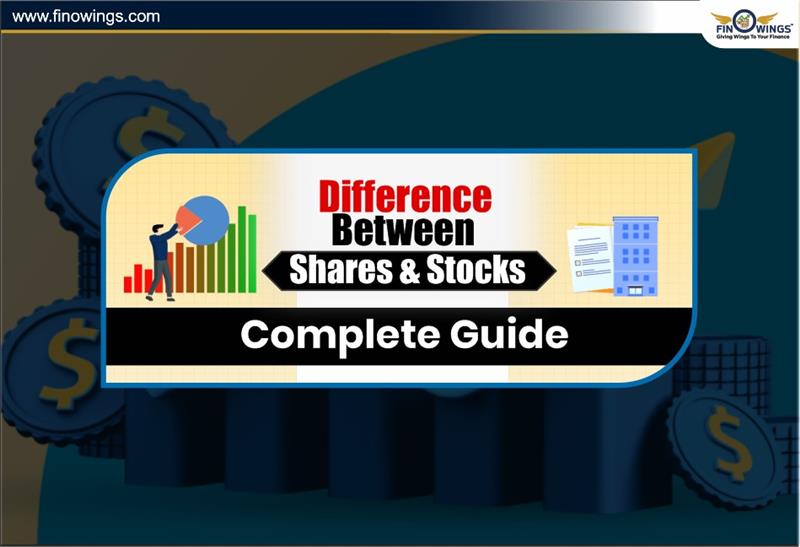Home >> Blog >> How to Calculate CAGR: Step-by-Step Guide for Investors
How to Calculate CAGR: Step-by-Step Guide for Investors

Table of Contents
Growing your money is a form of investment or you can invest in stocks, mutual funds or gold. But what is the best measure of how your investments are performing? CAGR is the most effective investment measurement instrument. CAGR is shortened as compound annual growth rate.
It is not always easy to invest, given how the market is evolving on the day to day basis. CAGR simplifies the ability to view the growth of the investments. We shall further decompose the working of CAGR, CAGR formula, and CAGR calculation in the below sections.
CAGR Meaning
CAGR is an abbreviation that is used to refer to Compound Annual Growth Rate. CAGR Growth rate is the annual percentage at which an investment would grow assuming that it increases at a constant rate each year.
In simple terms: CAGR is the rate at which your investment has increased on average per year during a specific period of time.
Example: Say you had put in 1,00,000 four years back and after 5 years, it had grown to 2,00,000, CAGR will inform you of what percentage you made every year.
Why is CAGR Important for Investors?
The value of investments is not stable, but fluctuates according to the market. CAGR shows the value of an investment over time and smooths the continuous fluctuations into an average for better understanding.
Where is CAGR Used in Investing?
Average annual growth.
- Performance of mutual funds.
- Appreciation of investments in the stock market.
- Growth of a portfolio.
- Growth of a business in terms of sales or revenue.
- Returns on investment in real estate.
- Monitoring long-term investments.
Average annual growth is widely used in CAGR because it is not biased.
CAGR Formula
The CAGR Formula is
CAGR = (ending value/beginning value) ^(1/n) - 1
n = number of years
Beginning value is the value of the investment at the start.
Ending value is the value of the investment after n years.
This formula can be used for all types of investments to calculate CAGR.
How to Calculate CAGR (Step-by-Step)
It is one such kind of investment where on starting with the initial investment of 1, 00, 000 Indian Rupees and an investment of 3 years later you have by and end of this 1, 00, 000 Indian Rupees as a valued investment. Begin by computing the percentage ending value of the starting value.
Step 1. First, the calculation is dividing the ending value by the beginning value.
The final value and the initial value are 1.80 and 1, as in (1,80,000)/(1,00,000).
Step 2. Then, compute the (1/n) value.
This approximates to 1.8 to power (1/3).
Step 3. Subtract by 1.
This informs you to suppose that the outcome is more or less equal to 1.216.
Step 4. Compute the percentage by multiplying by 100.
The outcome is 0.216, which once more may be converted to 21.6%.
Thus, it will be possible to say that the CAGR equals 21.6% per year.
This tells you that the value of the investment increases by 21.6% every year, compounding for a period of three years.
CAGR Calculator vs Manual Formula
Using a CAGR calculator gives you multiple advantages.
- Its execution is fast and very accurate without requiring complicated calculations.
- You can easily compare multiple investment projects using the online CAGR calculator.
- The tools can assist in financial planning and goal setting.
However, a good understanding of the formula and its underlying logic can aid in creating better investment plans.
Why is CAGR better than Absolute Return?
Many investors also consider total returns.
Example:
1,00,000 becomes 2,00,000 = 100%, Total Return
This is an example of absolute return and does not display any assurance of yearly growth. CAGR conveys the true annual return, thus making it more useful for comparison purposes among investment options.
Absolute Return Example:
100% return in 5 years.
CAGR Calculation:
= (2/1)^{1/5} - 1 = 14.8%
Hence, even though absolute return is comparatively more than others, CAGR communicates the actual annual growth rate.
Limitations of CAGR
CAGR is robust, but users must understand and evaluate its limitations.
It relies on the ideal smoothing of returns - Returns in real-life markets are highly volatile.
It doesn’t provide risk of the investment - Two investments with the same CAGR can have derivative risk.
It is devoid of irregular cash flow - For investment and withdrawal in a recurring fashion, you must use the concept of XIRR.
When Should Investors Use CAGR?
Investors can utilise CAGR while comparing the following investments:
1. Mutual Funds: 3 Year, 5 Year, 10 Year CAGR
2. Stocks: Long-Term Price Appreciation
3. Gold/Real Estate: Value Appreciation
4. Business Sales or Profits
5. Portfolio Performance.
CAGR helps answer the most important question: "How fast is my money growing per year?"
Fast CAGR Reference Table
|
Beginning Value |
Ending Value |
Years |
CAGR |
|
₹1,00,000 |
₹2,00,000 |
5 |
14.8% |
|
₹1,00,000 |
₹1,50,000 |
3 |
14.5% |
|
₹2,00,000 |
₹5,00,000 |
4 |
25.7% |
(Values approximate)
Conclusion
Every investor must understand CAGR, the CAGR formula, and the methods of CAGR calculation. CAGR helps in understanding the reasonable growth of investments, smoothing the turmoil of the market in the interim.
This understanding promotes better and sensible investing. Be it stocks or mutual funds, or the evaluation of the business, or the achievement of long-term monetary aims, it all narrows down to the meaning of how to calculate CAGR. If you really want to understand how your money is growing, don't just look at the final amount. Look at the compound annual growth rate!
DISCLAIMER: This blog is NOT any buy or sell recommendation. No investment or trading advice is given. The content is purely for educational and information purposes only. Always consult your eligible financial advisor for investment-related decisions.

















